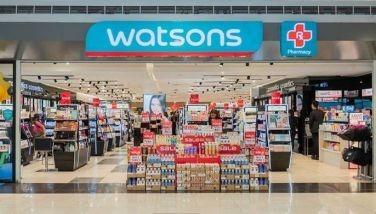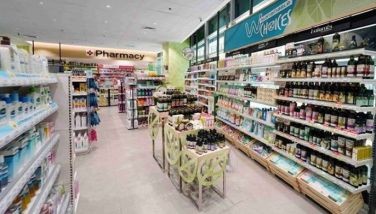Good news in bad

LOS ANGELES – Remember how P-Noy once explained the congestion problem at the Manila port? He said something to the effect that the port congestion as well as the traffic jams in Manila are signs of a vibrant economy. He probably has a point… to an extent because official incompetence is also to blame.
Port congestion is also a problem in Long Beach and Los Angeles. One reason is a labor problem that has resulted in a slowdown. But even without the labor problem, the surging American economy would have caused a congestion problem anyway.
The US economy seems to be really finally on the mend. They even made a sharp upward revision of US GDP to five percent.
As The New York Times reported it, “the economy roared ahead at a 5 percent annual growth rate in the July through September quarter, the fastest quarterly growth since 2003…The biggest revision that boosted G.D.P. was in personal consumption spending, the biggest engine of overall economic activity, which rose at a 3.2 percent annual rate, not the 2.2 percent rate earlier estimated.”
Some 321,000 new jobs were added in November. The Christmas holiday season showed a somewhat renewed consumer confidence. Stock market is in record high. Six years after that deep recession a recovery appears to be taking hold.
But a Los Angeles Times story asserts that American economic growth would have been stronger if the Long Beach and Los Angeles ports — which handle roughly 40 percent of US imports — were operating smoothly. “Brutal congestion at the nation’s busiest ports in Los Angeles and Long Beach is throwing a kink into an economy that’s finally kicking into high gear.”
The LA Times quoted an international trade economist who thinks “the negative drag probably will worsen in the fourth quarter, when the most brutal congestion surfaced. You want the ports, the entire supply chain to operate at maximum efficiency. And it’s not.”
According to the LA Times, the months-long bottleneck is hurting retailers and other businesses that aren’t getting their shipments on time. Massive ships from Asia anchor off the Los Angeles coastline waiting for the docks to clear.
A number of reasons are being cited to explain the port congestion problem. One is the increased use of massive container ships. Second is a surge in cargo as the economy improves. Third is a shortage of the trailers that truckers use to haul goods from the ports. But the labor problem is also a major reason.
As we have also experienced in Manila, the port congestion problem here is also causing serious headaches on the supply chains all over the country. The LA Times reports that many retailers airlifted their goods or diverted them to the East and Gulf coasts to ensure stocks are available for the holidays. The bottom lines of businesses are likely to be affected in the fourth quarter, something our own businesses are warning too.
US anti-trust regulations made it necessary for the port officials in L.A. and Long Beach to ask the federal government for permission to work together in a bid to clear the docks. Federal mediation may also be needed to help reach a new labor agreement.
Nearly 20,000 dockworkers at West Coast ports have been working without a contract since July, when their six-year agreement expired. The two sides are unable to agree on many issues. In the meantime, dockworkers are slowing down on the job to gain leverage.
The good news about all these problems, at least as far as the US is concerned, is that analysts can look at the long line of ships waiting to unload their cargo and come to the conclusion that the economy must be doing well. Indeed, that may be the case for the US.
But I am not convinced that is the case for us when we look at the Manila port congestion. I will concede economic growth has also contributed to our port congestion problem. But the main reason still has more to do with inadequate planning and incompetent management of our ports by the Philippine Port Authority or PPA.
The PPA had long been a good example of regulatory capture and it can be easily seen it dances to the music provided by the private port services operators. And until our problem became really serious almost a year ago, we had two international ports in Batangas and Subic that were underutilized because of faulty government policies.
But I also think DTI Secretary Greg Domingo is right to sound the alarm that we need more capacity even if we take Batangas and Subic into account. The time is right for government to think of setting up another major port that will not contribute to the road traffic congestion in Metro Manila.
I have heard of suggestions to put up a major logistical hub in the reclamation area all the way to Sangley Point. This will include a new international airport and a new container port with the proper access expressways.
But the planning and implementation of such a project is in the turf of DOTC. So I guess we have to wait for the new administration that hopefully will have more competent officials in that vital department.
It is clear to see how critical it is for us to have the right infrastructure in place for our economy to really take off. Sec Greg Domingo can only do so much to sell the Philippines to prospective investors in manufacturing. Sec Ramon Jimenez can also do only so much to sell our country as a tourist paradise. But unless Sec Jun Abaya is on the job, all efforts to sell our country to investors and tourists are wasted.
Maybe despite all these, our economy is not doing too badly. But can we imagine how much more could have been achieved if the proper infrastructure is in place? Maybe we need not have downgraded our original GDP growth targets if we had a more competent DOTC.
As for the US, it is good to know their economy is recovering more vigorously. Our own economy takes it cue from what is going on here. And with the Europeans apparently still in trouble, we sure can use some good news from the US today.
But the Americans must also make sure they do not shoot themselves in the foot like we always do. They need to settle their labor issues that bug the West Coast ports that are so important these days to their supply chains that extend across the Pacific to Asia.
All the technology in the world will do them no good if the retailers run out of stock on consumer items and manufacturers run out of parts they needed to complete products they manufacture.
For now, it is enough to end the year in a hopeful note of economies on the mend. The challenge for the new year is how to speed recovery and give the consumers the buying power they have lost.
Boo Chanco’s e-mail address is bchanco@gmail.com. Follow him on Twitter @boochanco
- Latest
- Trending




























